Sensor Sweep: Sword & Sorcery, Tales From the Magician’s Skull, Boxing, C.S. Lewis, RIFTS
Monday , 15, July 2019 Sensor Sweep 2 CommentsLit-Crit/Culture Wars (Brain Leakage): They always featured their alpha male heroes in exotic locations, getting into fist fights, knife fights, and gun 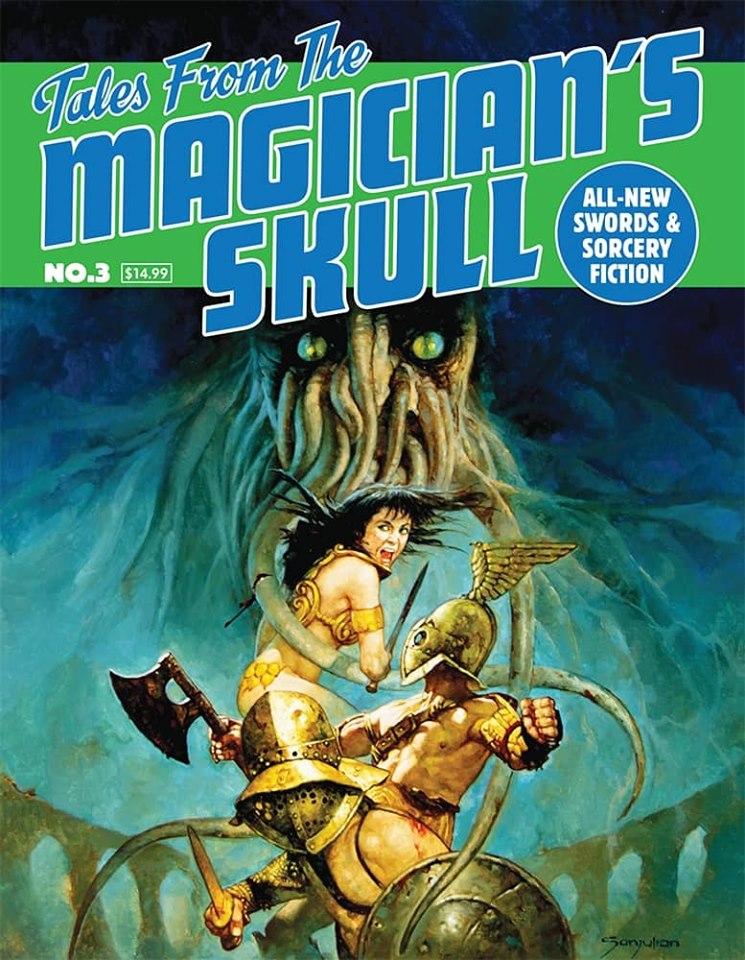 fights. The women were always fast and dangerous. The bad guys were always powerful and ruthless. The covers usually depicted some hard case with a gun, striking a tough guy pose with a scantily clad woman nearby. Maybe she had a gun of her own, watching his six. Maybe she was just clutched onto the hero, begging his protection. Politically incorrect? Maybe. But so what?
fights. The women were always fast and dangerous. The bad guys were always powerful and ruthless. The covers usually depicted some hard case with a gun, striking a tough guy pose with a scantily clad woman nearby. Maybe she had a gun of her own, watching his six. Maybe she was just clutched onto the hero, begging his protection. Politically incorrect? Maybe. But so what?
Magazines (Goodman Games): Tales From the Magician’s Skull is a printed fantasy magazine dedicated to presenting all-new sword-and-sorcery fiction by the finest modern crafters in the genre. These stories are the real thing, crammed with sword-swinging action, dark sorceries, dread, and ferocious monsters — and they hurtle forward at a headlong pace. Last year, we published issues #1 and #2 to great acclaim. The stories were well-received, and the fans demanded – more! MORE! We hear you, fans, and the Skull is prepared to grant your desire!
This Kickstarter launches issues #3 and #4, as well as subscriptions to future issues!
Robert E. Howard (Black Gate): I have been mulling this problem for a while now, and of course, I had the answer all along: “Queen of the Black Coast” is the best Conan tale to read if you have never read any before. In other words, it is the perfect story to discover the character, the Hyborian setting, and of course Howard’s talent.
One of the numerous problems that have plagued the perception of the Cimmerian by the general public is this idea that the tales represent as many steps in Conan’s so-called “biography,” though nothing in the series supports that notion.
Cthulhu Mythos (DMR Books): Price burst onto the Cthulhu Mythos/weird fiction/pulp scene in 1981 when he launched Cryptic Publications and its  flagship title, Crypt of Cthulhu. For those who don’t know the history, the late ‘70s was a little bit of a low ebb for things Mythosian and Lovecraftian. Arkham House, after the death of August Derleth, had veered away from the Mythos fiction that had been its bread and butter.
flagship title, Crypt of Cthulhu. For those who don’t know the history, the late ‘70s was a little bit of a low ebb for things Mythosian and Lovecraftian. Arkham House, after the death of August Derleth, had veered away from the Mythos fiction that had been its bread and butter.
C. S. Lewis (Mewsings): Some time in the mid-to-late 1930s, C S Lewis and J R R Tolkien agreed to each write an “excursionary ‘thriller’”, as Tolkien put it,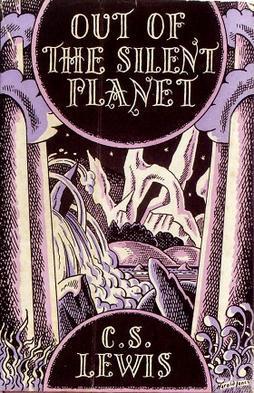 with Tolkien attempting a story of time-travel and Lewis one of space-travel. Tolkien never finished his (what exists was eventually included in The Lost Road and Other Writings), whereas C S Lewis went on to write a whole trilogy, beginning with Out of the Silent Planet(published in 1938).
with Tolkien attempting a story of time-travel and Lewis one of space-travel. Tolkien never finished his (what exists was eventually included in The Lost Road and Other Writings), whereas C S Lewis went on to write a whole trilogy, beginning with Out of the Silent Planet(published in 1938).
Sword-and-Planet (Fantasy Literature): The first novel of Farley’s to see the light of day, The Radio Man, was initially serialized in the pages of the 10-cent weekly Argosymagazine, a four-part affair stretched over the June 28 – July 19, 1924 issues; that first issue featured gorgeous cover artwork for the serial by famed illustrator Stockton Mulford. Farley’s novel was later reprinted as a three-part serial in the 12/39 – 2/40 issues of Famous Fantastic Mysteries (which, despite its name, reprinted prodigious amounts of sci-fi and fantasy), and was finally released as a hardcover book, in 1948, by the Fantasy Publishing Company, featuring another impressive cover, this time by one O. G. Estes, Jr.
Comic Books (Paint Monk): “Conan the Gambler” is the first issue in a three-part story arc, and it begins as many Conan comics do – the Cimmerian stumbles across an outnumbered victim being robbed. It doesn’t take a heady plot to create a good Conan story, and in this case, the trope is well-used but effective.
The victim Conan rescues is a man named Maraudus Mathir, a foreign merchant engaged in a trade war with another dangerous peddler named Kero, dubbed “Kero the Callous.”
Tolkien (Alas, Not Me): The question arose for me immediately: why do only ‘mortal men’ require enchantment to be ‘contained’ in Faërie? While I had written before about the mortal experience of Faërie in Middle-earth, I had never asked myself this question as far as I could recall. What came to mind at once was a passage from The Athrabeth Finrod ah Andreth in Morgoth’s Ring. There Finrod says to Andreth (MR 315).
Boxing (Don Herron): 100 years ago today, on July 4th, 1919, Jack Dempsey won the heavyweight title from Jess Willard in Toledo. 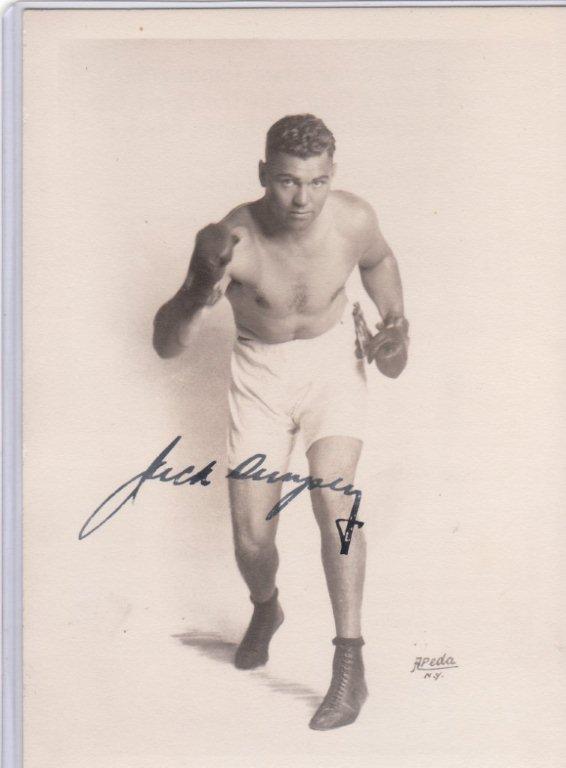
It was a remarkable time in the history of sports. Dempsey was more popular than Babe Ruth and boxing was followed every bit as closely as football or baseball.
Here’s what Robert E. Howard had to say about Dempsey in a letter to H. P. Lovecraft, years after Dempsey was no longer champion: “Jack London and Jim Tully wrote their way up out of the abyss; Jack Dempsey fought his way up.”
Art (DMR Books): Roy G. Krenkel would’ve turned one hundred and one today. I have to say that his centennial year was underwhelming. Despite his 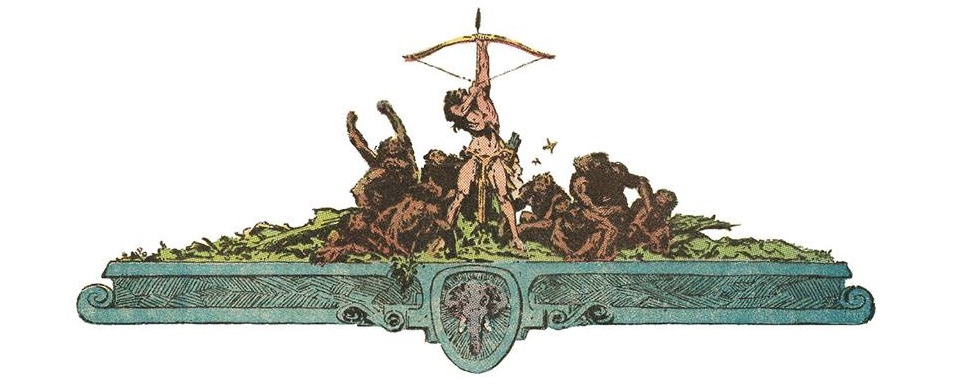 importance to SFF art during a crucial period in the twentieth century, his one hundredth birthday year went largely ignored across the blogosphere. I wrote two posts looking at the man and his work, but never quite got around to finishing all that up with a summation of his influence and legacy.
importance to SFF art during a crucial period in the twentieth century, his one hundredth birthday year went largely ignored across the blogosphere. I wrote two posts looking at the man and his work, but never quite got around to finishing all that up with a summation of his influence and legacy.
Magazines (Rough Edges): I’ve been waiting to have a copy of this book in my hands before posting about it, and now I do. THE DIGEST ENTHUSIAST is just about the best magazine out there, and the new issue, Book Ten, features the longest, most extensive interview I’ve ever done, with lots of cover reproductions and at least one photo of me that I’m pretty sure has never been published anywhere else. Doing this interview with editor Richard Krauss was a lot of fun and brought back many great memories of the early days of my career.
D&D (Blog of Holding): n its 45 years, D&D has spawned a video game industry that’s worth more than either the movie or the book industry. Dungeons,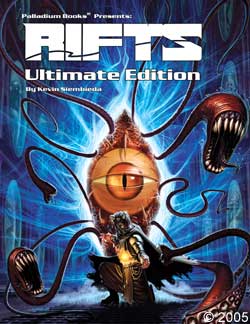 dragons, leveling, character classes, and loot drops define video game design space. But books, movies, and TV shows haven’t absorbed much from D&D that wasn’t in Tolkien.
dragons, leveling, character classes, and loot drops define video game design space. But books, movies, and TV shows haven’t absorbed much from D&D that wasn’t in Tolkien.
In medieval and modern fantasy literature, you’ll frequently find magic swords, but no magic armor; wizards, but no clerics; and dragons, but no dungeons.
RPG (Walker’s Retreat): RIFTS is one of those tabletop RPGs that promise a wide and diverse array of playable characters, explorable environments, and gameworthy scenarios. It’s a lot to take in, and one of the rookie mistakes players make is to just run it cold and stupid like you can–successfully–do with D&D. That way lies disaster. Let me put down one proven practice that is key to running any tabletop RPG with the open scope and scale that RIFTS allows: Define your campaign space.
Cryptozoology (Brian Niemeier): My crypto-reader returns will a spiritual successor to the tale he shared last time. So, I was just out visiting my cop buddy in Indiana for the first time in two years, and he was regaling me with the backlog of Tales of Rural Police Adventures while we’re out target practicing in his field and had one that’s right up our recent conversations’ alleys.
Gaming (PC Gamer): Cyberpunk 2077‘s Night City is full of people for you to beat up, including gang members, cops and corporate douchebags—there are limits, though, so you won’t be brawling with everyone. Children, for instance, will be protected from your murderous rages, along with story-important NPCs.
Gary Gygax (Forgotten Runes): I first encountered Greyhawk in the Greyhawk expansion to the little brown books in 1975. Although there were several pages of short adventure suggestions there was very little setting. I played “Descent into the Depths” as a tournament module at GenCon, but the Underdark has little relation to the surface kingdoms of Greyhawk.
Thanks for the link!
That’s an excellent post from Daniel Davis. Whether S&S actually does address “the fight against the inevitability of time” (or whatever), the fact remains that S&S has always largely skewed towards men. As Edgar Rice Burroughs once said, “Entertainment is fiction’s purpose” and what men find entertaining isn’t exactly a gender-neutral affair.
That article on Dempsey is another good look at manliness. Robert E. Howard had much more to say about Dempsey than he ever did about Dunsany, for instance.